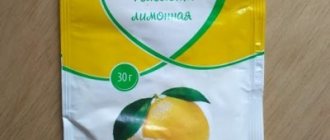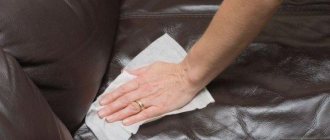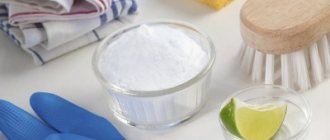- Oxygen bleach
Cast iron bathtubs have been popular for many decades, but such sanitary ware is susceptible to various types of contamination, which spoils its appearance and compromises hygiene. You can clean a cast iron bathtub and return it to its original whiteness at home, using available folk remedies or advances in the chemical industry.
A cast iron bathtub is strong, wear-resistant and durable, but its enamel coating is susceptible to various types of contamination, which spoil the appearance of the product and reduce its service life.
Causes and types of pollution
Cast iron bathtubs are susceptible to rust and yellow stains. This is due to two factors: the quality of the coating and the water. When applying a protective layer, zirconium salts are added to the enamel, which are unstable to corrosive processes. If there are chips or scratches, rust penetrates the metal and actively grows, damaging the coating.
Poor-quality water with a high content of various impurities increases the risk of a problem.
One of the reasons for the appearance of rust is poor-quality tap water, which contains metal particles, minerals and other elements that negatively affect the enamel.
The enamel coating fades over time and loses its shine and whiteness. This is due to violation of the rules of surface care, the use of unsuitable cleaning products, hard sponges or brushes.
Use of household chemicals
How to clean a cast iron bathtub with household chemicals? Cast iron is wear-resistant and durable. The metal is not afraid of friction, chips, scratches and other damage. However, to make cast iron smooth and white, it is coated with enamel, so the housewife, when choosing a cleaning product, must take into account the characteristics of the enamel surface.
Effective and safe household chemicals:
- CillitBang – eliminates limescale and soap stains. It is suitable for preventative cleaning, but it cannot cope with serious and old stains.
- CifUltraWhite, Comet - remove impurities of various natures, while at the same time carefully bleaching.
- "Sanox" is an effective remedy for removing rust and yellowness. To achieve the desired effect and not damage the enamel, strictly follow the instructions for use.
- “Pemolux” contains soda, therefore it has abrasive properties. It is rarely used to remove serious local contamination.
Household chemicals will help you get rid of soap stains, limescale, rust and other contaminants.
To clean a cast iron bathtub, do not use chlorine-containing products, substances with abrasive particles, gasoline or acids, so as not to damage the enamel coating.
When working with household chemicals, take the following precautions:
- wear rubber gloves and a respirator;
- take care of good ventilation in the bathroom;
- avoid contact of the product with the skin and mucous membranes, do not inhale the fumes;
- Before use, carefully read the instructions on the packaging of the product you choose.
Folk remedies for bath cleaning
Folk remedies will help remove yellow stains, limescale and other contaminants. They are easy to use, do not damage the surface, but effectively cope with their function.
Vinegar
Use table vinegar to remove stains and keep your bath clean.
Cleaning procedure:
- Fill the bathtub with warm water.
- Pour 250 ml of vinegar into a container.
- Leave the solution for 2-4 hours.
- Drain the water, rinse the surface thoroughly and wipe dry.
To get rid of more stubborn stains, wipe the stains with a soft sponge soaked in vinegar.
Table vinegar will help you safely remove yellow stains from your bathtub. It can be used as a stand-alone product or in combination with other substances
Ammonia
The following method will help you clean your bathtub from yellow stains and limescale deposits:
- Combine water and ammonia in a ratio of 10:1.
- Moisten a soft sponge in the resulting solution and treat all surfaces with it. Leave for 20 minutes.
- After the time has passed, rinse the bathtub with clean water and wipe dry.
Method 6 - ammonia
Ammonia with peroxide can save you from yellowness, as well as rust. Use these tools like this:
- To begin, take a half-liter container and pour 100 grams of ammonia into it. After this, carefully pour 50 ml of peroxide into this mixture. Mix the ingredients thoroughly.
- Take a clean sponge, scoop the resulting mixture onto it and carefully distribute it over the walls of your font. Leave it all to sit for a quarter of an hour.
- After this, simply rinse off the remaining product. The rusty coating will go away along with it.
Advice:
This product is also best used when rust has just appeared. If you are trying to remove old stains in this way, you will have to process the bath several times.
Restoration of an old cast iron bathtub
If you cannot get rid of the stains, and the appearance of the coating leaves much to be desired, restore the bathtub. To carry out the procedure, contact a specialist - a restorer or a plumber. This decision will save time and effort, but can cause a blow to the family budget. Enameling a bathtub yourself is also quite simple.
To make the restoration correctly, follow the following algorithm:
- Dilute oxalic acid powder in a small amount of water until you obtain a homogeneous paste. Apply the mixture to stained areas and leave for 30-40 minutes.
- Clean the stains with fine sandpaper to remove the damaged layer. Wash off all dirt with water and dry the material well.
- Restore the enamel coating using nitro enamel from a can. Apply the first coat of enamel, leave until completely dry, and then cover the bathtub with it again.
Old stains cannot be removed, but restoration, which you can do yourself at home, will help save your cast-iron bathtub.
Often, as a result of use, chips and small scratches appear on the surface of the bathtub. They can also be eliminated through restoration:
- Clean damaged areas with fine sandpaper.
- Combine white with zinc and BF-2 glue in equal proportions.
- Gradually fill all the cracks with the resulting mixture. Apply the product in small layers so that it dries well.
- After filling the recesses, apply a final thin coat to ensure the new surface is perfectly smooth and even.
Bath before restoration
Bathtub after restoration (filling with acrylic, worked by a specialist)
Method 4 – turpentine
Turpentine-based gruel will help you get rid of rust quickly and easily. Use it like this:
- To begin with, you will need to take 100 grams of ordinary table salt and 35 ml of turpentine. These ingredients should be mixed until a homogeneous paste is formed.
- The resulting product should be applied to problem areas of your bathtub and left on the walls for a quarter of an hour.
- After this, you will need to wash your font from the remnants of such a product and dry it very well.
If the first time you did not manage to wash the font white in this way, you can try other compositions after the enamel has completely dried. Don't worry, you will be able to achieve a good result the second or third time.
How to whiten a bath
You can clean a cast-iron bathtub white at home and restore its shine and cleanliness using available products. To obtain the desired effect, follow these recommendations.
Oxygen bleach
You can make your bath tidy using oxygen bleach. Whitening technology:
- Fill the bathtub with hot water.
- Dissolve oxygen bleach in the liquid.
- After 10-12 hours, drain the solution, wash the bath with clean water and wipe with a soft cloth.
As an alternative to oxygen bleach, use citric acid or citrus juice.
A clean bathtub, radiating shine and whiteness, creates a special atmosphere in the bathroom, looks aesthetically pleasing and hygienic
General recommendations for care and use
In order to extend the service life of a cast iron bathtub, keep it clean and white, follow the rules of care and use:
- After each bath, thoroughly wash the surface and wipe it with a dry soft cloth, as remaining moisture contributes to the development of corrosive processes and the appearance of yellow spots.
- Do not leave metal objects on the surface, which, when exposed to moisture, will rust and cause yellow spots to appear.
- Do not use water hotter than +75℃ for bathing, as it may cause cracking of the enamel.
- For cleaning, do not use aggressive compounds or abrasive tools. It is better to wash the bathtub with foam sponges, microfiber cloths, and brushes with soft artificial bristles.
- Do not place furniture or heavy objects in the bathtub that could damage the surface or leave scratches or dents.
- Carry out preventive cleaning, preventing the formation of stubborn stains, the growth of yellowness and other dirty marks.
- To purify tap water, install coarse filters.
To avoid rust, plaque and other contaminants, follow the rules for caring for a cast iron bathtub. Be sure to wash and dry the surface after each use.
Proper care of a cast-iron bathtub will extend the life of the plumbing fixtures and keep the coating fresh and white. To maintain cleanliness, carry out preventative cleaning of the product, use suitable safe products and follow the instructions for use.
What not to do
Often, to care for the bathroom, they use household products that are on hand, instead of specialized chemicals from the store. Do not clean the enamel layer using:
- gasoline;
- washing powder;
- chlorine;
- strong acids;
- abrasive pastes.
Alcohol, white spirit and acetone can be used in exceptional cases to remove stubborn stains in local areas, primarily dirt remaining after repairs. Do not use metal scourers or fiberglass sponges for regular cleaning - they cause microdamage to the enamel, as a result of which its layer becomes thinner.











